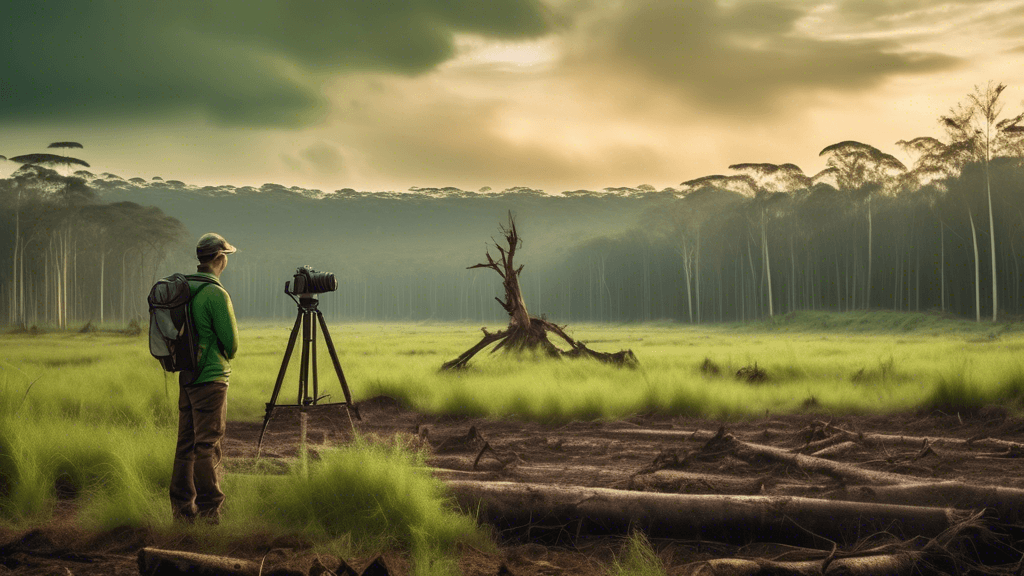
Capturing Change: Using Landscape Photography for Social Causes
Share
The Power of Landscape Photography in Social Advocacy
Have you ever paused to think about the role a photograph can play in driving social change? In an era where our natural environments are under unprecedented pressure from climate change, pollution, and urban expansion, landscape photography has emerged as a powerful tool for environmental and social advocacy. But how exactly does capturing landscapes help influence public opinion and policy?
Creating Emotional Connections Through Visual Storytelling
Landscape photography does more than just showcase the beauty of nature—it vividly portrays the impacts of human actions on our planet. The beauty of a landscape photograph can often speak louder than statistics, making abstract concerns more tangible and urgent. By presenting images that depict the stark contrast between untouched and degraded environments, photographers can evoke powerful emotions, prompting public and political engagement.
Spotlight on Environmental Issues
A single image can highlight environmental issues that might otherwise go unnoticed. Photographs of melting glaciers, deforested lands, or polluted rivers capture the immediate effects of environmental mismanagement in ways that reports and articles cannot. The visual impact of these images can help propel movements, influence leaders, and sway public opinion towards supporting sustainable practices and policies.
For instance, consider the work of renowned landscape photographer Ansel Adams, whose images of the American West helped establish several national parks and galvanized the conservation efforts of the mid-20th century. His photographs didn’t just capture landscapes; they actively participated in safeguarding them. Isn’t it fascinating how a well-captured image can lead to environmental preservation?
Education and Awareness
Landscape photography also plays a crucial educational role. It introduces people to distant landscapes and environmental phenomena they might never personally experience. This fosters global awareness and a deeper understanding of nature's diversity and the importance of its conservation. Educational campaigns, workshops, and exhibitions featuring striking landscape photographs can serve as poignant learning platforms.
- Highlighting the effects of climate change, such as rising sea levels and extreme weather conditions.
- Showcasing the beauty and vulnerability of ecosystems, encouraging community involvement in conservation efforts.
- Documenting the success stories of restored areas or protected regions, providing a hopeful perspective and inspiring further action.
Case Studies: The Impact of Iconic Photographs
Take, for example, the influential photograph Earthrise, taken by astronaut William Anders during the Apollo 8 mission in 1968. This image of Earth rising over the moon’s horizon had a profound impact on people’s perception of the planet's fragility and helped catalyze the environmental movement of the 1970s. Similarly, Nick Brandt's haunting images of calcified animals at Tanzania’s Lake Natron serve as a stark reminder of the unintended consequences of human interference in natural processes. These photographs not only document changes but also inspire activism and policy changes.
How Can Aspiring Photographers Contribute?
If you're a photographer looking to make a difference, consider the following steps to use your art for social advocacy:
- Focus on Local Issues: Start with your immediate environment—areas where the impact of your work might be most tangible.
- Educate Yourself and Your Audience: Understand the stories behind the landscapes you capture and share these stories alongside your photographs to educate your audience about the broader context.
- Collaborate with Organizations: Partner with environmental groups, NGOs, or educational institutions that can help disseminate your work to a wider audience and maximize its impact.
- Exhibit and Publish: Use exhibitions and publications to reach different demographics and instigate conversations about pressing environmental issues.
Final Thoughts
Can landscape photography truly drive societal shifts and influence environmental policymaking? History and ongoing projects suggest a resounding yes. By transforming environmental advocacy into a visual experience, photographers wield the power to affect heart and policy alike, creating lasting impacts through their lenses.
Are you ready to capture change? Embrace your role as a photographer-activist and start using your skills to shed light on the vital environmental and social issues of our time. Let your camera be your tool for advocacy, education, and change. The world is waiting to see through your lens—what story will you tell?





